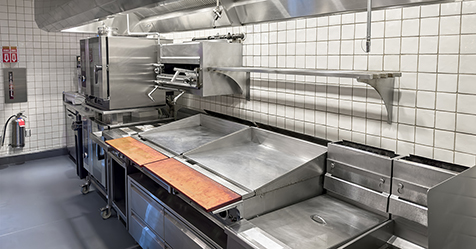Sewer gas is a mixture of gases with some being toxic.
Sewer gas can include hydrogen sulfide, ammonia, methane, carbon dioxide, sulfur dioxide or nitrogen oxides.
The smell of sewer gas can be sickening to some.
Beneath plumbing fixtures (sinks, floor drains, showers, commodes, urinals) there is a “p” shaped pipe that is called a p-trap.
It is designed to trap water and thereby prevent noxious sewer gases from bypassing the trap and entering the room where the fixture is located.
A deodorizer, drain cleaner or other chemical solution may block sewer gas by lodging itself in a fixture’s p-trap.
The result will usually be short-lived.
Most of these solutions will evaporate much like water; however, if they tend to linger in the p-trap like mineral oil or antifreeze, irreparable damage might be caused.
A stinky drain is seldom the result of poor housekeeping or the fault of a plumber.
Knowing The Parts
There are two types of drains or drain pipes that allow the contents of various fixtures to enter into the soil stack.
There is one type of drain for fixtures such as sinks and floor drains and another for commodes and urinals.
Beneath all these fixtures there is a p-trap followed by a trap arm.
The trap arm connects the fixture with its p-trap to the appropriate drain.
By studying the illustration associated with this article, you will note that both types of drains, whether for sewage (commodes, urinals) or graywater, (sinks, floor drains, showers, etc.) enter the soil stack.
All drains have a vent stack and most often a branch vent, both of which (one component after the other) connect to the stack vent which leads to the rooftop of most buildings.
Vents allow air as well as sewer gas to escape from the drains.
Air and sewer gas might otherwise block the contents of the drains from following the drains’ evacuation routes.
The smell of sewer gas will enter a room in which there is a plumbing fixture (sink, floor drain, commode, urinal, etc.) when the fixture’s p-trap is not filled to its capacity with water or a solution specifically formulated to block noxious sewer gas odors.
The sewer gas moves upward through the soil stack and then in the opposite direction of the graywater flow through the drain pipe.
Again, if the p-trap is not fully sealed, the sewer gas will pass through the p-trap, enter into the fixture and impregnate the room where the plumbing fixture is located.
Typically, in two weeks, water will evaporate in a p-trap to expose the trap’s upper dip or ceiling and thereby allow sewer gas to pass through the trap and into the fixture or floor drain.
Blocking The Odor
Unless the container in which a solution is packaged has a label indicating that the solution was formulated to block sewer gas odor, it should not be used in this way.
Should a solution be lodged in a p-trap for an extended period of time and the formulator for the solution has not indicated that it is an acceptable product by which to block sewer gas odors, the formulator cannot be held liable for damage done to a p-trap or any other portion of the plumbing system.
Sump, effluent and sewer pumps can be damaged or rendered inoperable by chronic exposure to solutions not intended to be used in a plumbing system.


